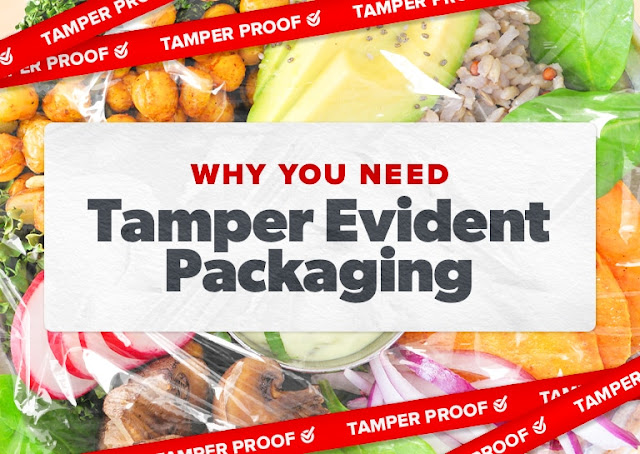How Tamper Evident Packaging Protects against Counterfeits
The word counterfeit often recalls high end luxury items, like designer handbags, clothing, and watches, but the problem goes much wider. The range of goods available includes electricals, car parts, vapes, cosmetics, toys, pharmaceuticals and even baby formula. Consumers need to be on their guard when purchasing, which can be increasingly difficult with the ease at which third party sellers can trade in online marketplaces.
The growth of the counterfeit industry. Counterfeit goods are typically manufactured
by individuals or organizations that aim to profit from their sale of fake
products. Operating at different levels of sophistication, they range from
small-scale operations to large, well-organized criminal networks.
In some cases, organized crime syndicates may be involved in
the production and distribution of counterfeit goods. There is an underground
economy devoted to copying and selling any conceivable product that you can
think of, including low value products like laundry detergent or soap. The internet has increased the amount of
counterfeit goods sold worldwide. The ease of setting up online marketplaces
and the anonymity of online transactions have made it easier for counterfeiters
to sell their goods. It’s also made it easier for counterfeiters to reach consumers
in different countries.
This has led to an increase in the volume of counterfeit
goods sold, as well as the types of goods being counterfeited.
The impact of counterfeit goods on the economy. This illicit trade not only translates to
lost sales for legitimate businesses, but counterfeit goods may also pose
health and safety risks to consumers, which can result in further costs to the
healthcare system and other public services.
Counterfeit goods can damage a brand’s reputation by
diluting its value and authenticity. Consumers
who unknowingly purchase counterfeit products and do not have a positive
experience with them will have negative perceptions of the brand and it may impact
product reviews, word of mouth recommendations and future sales.
Counterfeit goods can also result in a loss of revenue for
brands, as counterfeiters often sell their products at a lower price than the
genuine article. Stores offering fake products at a lower or indeed, bargain
price, will win the sale, reducing potential sales on other platforms.
How brands can protect their goods against counterfeiting
with tamper evident packaging.
Packaging plays a crucial role in protecting brands against
the risk of counterfeit goods. So, not only does can protect your product from
damage, but the right packaging materials can protect your reputation too!
You may hear people refer to tamper evident packaging or
anti-counterfeit packaging. So, what is tamper evident packaging? It is packaging
that has indicators or barriers to entry, which if breached can be expected to
provide visible evidence to the end user that tampering has occurred.
In short anti-counterfeit packaging or These are specific
products that are designed to highlight if someone has tampered with a package.
But there are lots of different ways you can combat the risk of counterfeiting
with packaging.
Here are packaging tips to consider:
Think about branded packaging carefully – printed packaging
with strong branding can make it difficult for counterfeiters to replicate.
This includes using distinctive colors, logos, and fonts that are easily recognizable.
Some brands choose to print their custom packaging on the inside only, so the
exterior does not expose the contents of packages.
Complex or unusual packaging designs can be hard to
replicate – packaging designs that are complex and difficult to reproduce can
make it harder for counterfeiters to copy the product.
Design your packaging to include security features – this
can include things such as holograms, or unique serial numbers. Alternatively,
you can even include security folds into your cardboard box designs, to stop
would-be thieves putting their hand in to packages.
Tamper evident markers can help prevent interference –
tamper-evident seals and labels will help to verify the authenticity of your
product and make it more difficult to remove without tearing or marking the
pack, rendering it unable to be reused.
Use connected packaging to track goods – connected packaging
with tracking technology, such as RFID tags, which allow companies to monitor
the movement of their products from the point of manufacture to the point of
sale, makes it easier to detect any unauthorized diversion or tampering.
Help your customers spot a fake – educate your customers
about the packaging and labelling of your products to make it easier for them
to spot fakes.
At Quick Pak Inc, we work with customers to ensure their
branded packaging delivers the high levels of security and protection, helping
to protect their product, their brand, and their reputation.
If you would like to find out more about our branded
packaging solutions, contact us at 813 242 6995 or sales@quickpakinc.com




Comments
Post a Comment